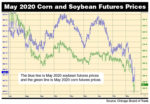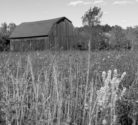Advertise Follow Us
Items Tagged with 'commodity prices'
ARTICLES
NDSU Extension Projects Commodity Prices for 2019
Get a head start on planning with 2019 livestock and crop price projections.
Read More
Move Cautiously If You Want To No-Till Expiring CRP Land
Additional acreage could become available, but is it worth the cost to farm? Here are tips on finding the land and determining its suitability for no-till cropping.
Read More







